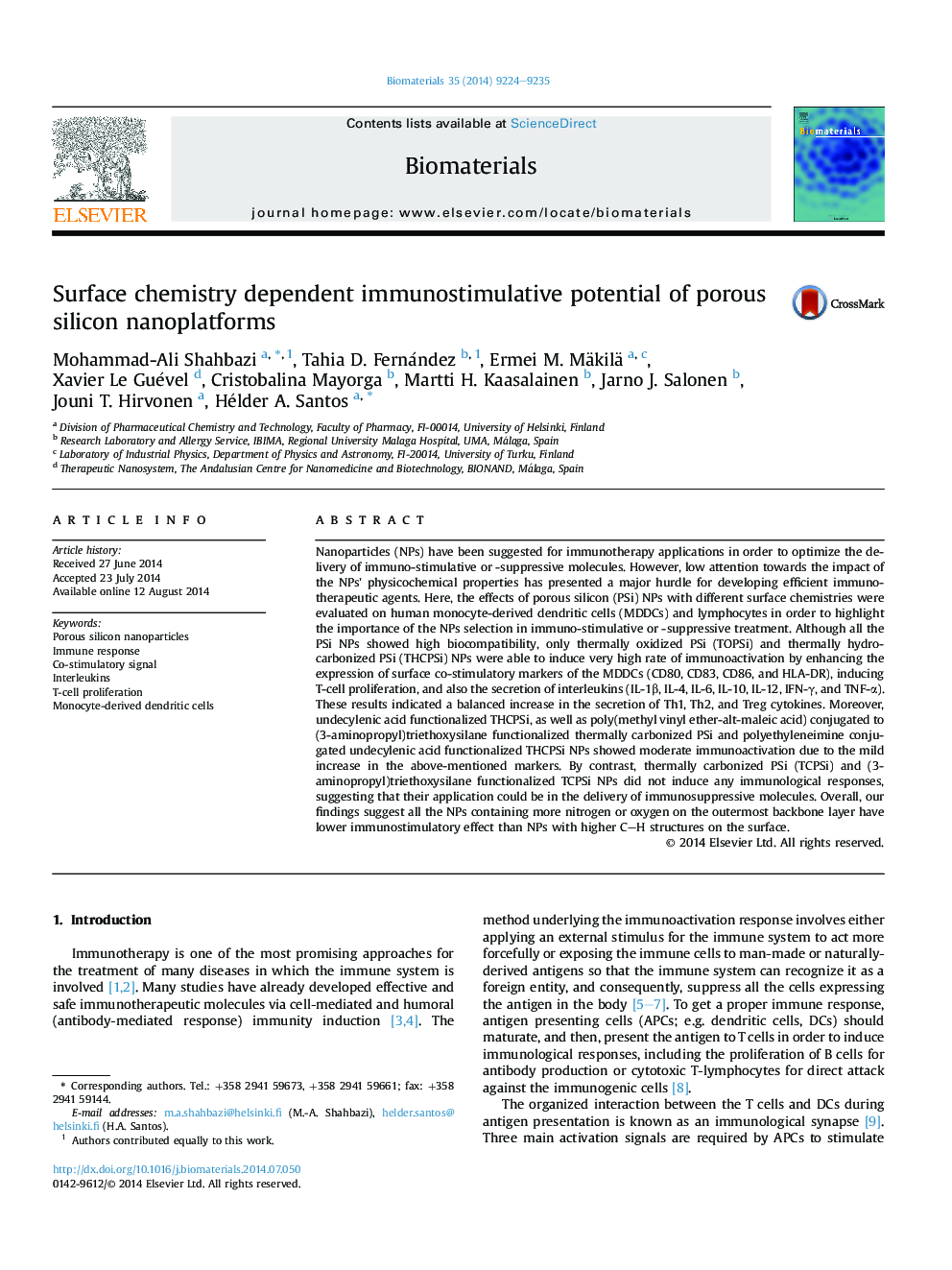| کد مقاله | کد نشریه | سال انتشار | مقاله انگلیسی | نسخه تمام متن |
|---|---|---|---|---|
| 5819 | 437 | 2014 | 12 صفحه PDF | دانلود رایگان |
Nanoparticles (NPs) have been suggested for immunotherapy applications in order to optimize the delivery of immuno-stimulative or -suppressive molecules. However, low attention towards the impact of the NPs' physicochemical properties has presented a major hurdle for developing efficient immunotherapeutic agents. Here, the effects of porous silicon (PSi) NPs with different surface chemistries were evaluated on human monocyte-derived dendritic cells (MDDCs) and lymphocytes in order to highlight the importance of the NPs selection in immuno-stimulative or -suppressive treatment. Although all the PSi NPs showed high biocompatibility, only thermally oxidized PSi (TOPSi) and thermally hydrocarbonized PSi (THCPSi) NPs were able to induce very high rate of immunoactivation by enhancing the expression of surface co-stimulatory markers of the MDDCs (CD80, CD83, CD86, and HLA-DR), inducing T-cell proliferation, and also the secretion of interleukins (IL-1β, IL-4, IL-6, IL-10, IL-12, IFN-γ, and TNF-α). These results indicated a balanced increase in the secretion of Th1, Th2, and Treg cytokines. Moreover, undecylenic acid functionalized THCPSi, as well as poly(methyl vinyl ether-alt-maleic acid) conjugated to (3-aminopropyl)triethoxysilane functionalized thermally carbonized PSi and polyethyleneimine conjugated undecylenic acid functionalized THCPSi NPs showed moderate immunoactivation due to the mild increase in the above-mentioned markers. By contrast, thermally carbonized PSi (TCPSi) and (3-aminopropyl)triethoxysilane functionalized TCPSi NPs did not induce any immunological responses, suggesting that their application could be in the delivery of immunosuppressive molecules. Overall, our findings suggest all the NPs containing more nitrogen or oxygen on the outermost backbone layer have lower immunostimulatory effect than NPs with higher C–H structures on the surface.
Journal: Biomaterials - Volume 35, Issue 33, November 2014, Pages 9224–9235
